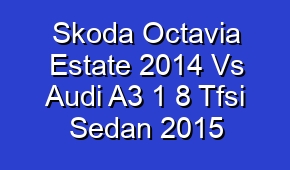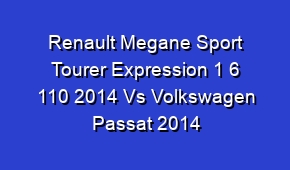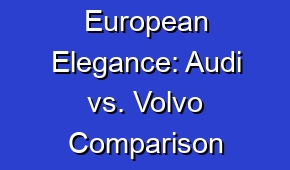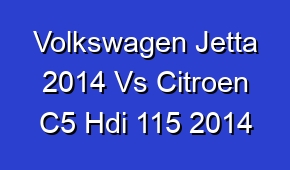Volvo and Subaru: Safety Leaders Explained

Discover why Volvo and Subaru have earned their reputation as safety leaders in the automotive industry. From advanced safety features to rigorous testing and innovative technologies, these two brands prioritize the well-being of their drivers and passengers. Explore how Volvo and Subaru continue to set the standard for safety, providing peace of mind on the road.
When it comes to car safety, Volvo and Subaru have established themselves as industry leaders. Both brands prioritize the well-being of their drivers and passengers, implementing advanced safety features that set them apart from their competitors.
Volvo has long been synonymous with safety, with a strong commitment to protecting its occupants. The brand’s innovative technologies such as collision avoidance systems and lane departure warnings contribute to preventing accidents and minimizing the severity of collisions. Additionally, Volvo’s emphasis on crash testing and rigorous safety standards ensures that their vehicles provide superior protection in real-world scenarios.
Subaru, on the other hand, boasts an impressive track record in safety due to its incorporation of symmetrical all-wheel drive, which enhances stability and traction on various road conditions. The brand’s EyeSight Driver Assist Technology offers features like adaptive cruise control and pre-collision braking, providing an extra layer of protection. Furthermore, Subaru’s commitment to building robust vehicle structures and utilizing high-strength materials contributes to their exceptional safety performance.
In conclusion, both Volvo and Subaru have earned their reputation as safety leaders through their continuous innovation and unwavering dedication to protecting their drivers and passengers.
| Volvo and Subaru are safety leaders due to their advanced safety features. |
| Both Volvo and Subaru prioritize driver and passenger safety in their vehicle designs. |
| The safety ratings of Volvo and Subaru vehicles consistently rank among the highest. |
| Volvo and Subaru invest heavily in research and development to improve safety technology. |
| Both automakers focus on crash avoidance systems to prevent accidents. |
- Volvo and Subaru prioritize the use of high-strength materials in their vehicle construction.
- The safety features of Volvo and Subaru vehicles include advanced driver-assistance systems.
- Volvo and Subaru conduct rigorous testing to ensure the safety of their vehicles.
- Innovative safety technologies such as blind-spot monitoring and lane-keeping assist are standard in many Volvo and Subaru models.
- The commitment of Volvo and Subaru to safety extends to pedestrian protection measures.
Why Are Volvo and Subaru Considered Safety Leaders?
Volvo and Subaru have earned a reputation for being safety leaders in the automotive industry. Both companies prioritize safety as a core value and have implemented advanced technologies and design features to enhance the safety of their vehicles.
One of the reasons why Volvo and Subaru are considered safety leaders is their commitment to research and development. They invest heavily in safety innovations and conduct extensive crash tests to ensure their vehicles meet high safety standards. Volvo, for example, has pioneered numerous safety technologies such as seatbelt pretensioners, side-impact protection systems, and pedestrian detection systems.
Another factor that sets Volvo and Subaru apart is their focus on active safety features. These features are designed to prevent accidents from happening in the first place. Both brands offer advanced driver-assistance systems that include features like adaptive cruise control, lane-keeping assist, and automatic emergency braking.
In addition to technological advancements, Volvo and Subaru also prioritize vehicle construction and design. They use high-strength materials in their vehicle bodies to provide better protection in the event of a collision. Both brands also incorporate crumple zones and energy-absorbing structures to minimize the impact forces on occupants.
Furthermore, Volvo and Subaru have received numerous safety awards and accolades from reputable organizations such as the Insurance Institute for Highway Safety (IIHS) and Euro NCAP. These recognitions further validate their commitment to safety and reinforce their status as industry leaders.
What Safety Features Do Volvo and Subaru Vehicles Offer?
Volvo and Subaru vehicles offer a wide range of safety features to provide enhanced protection for drivers and passengers. Some of the common safety features found in their vehicles include:
– Adaptive Cruise Control: This feature uses radar or camera systems to maintain a safe distance from the vehicle ahead and adjusts the speed accordingly.
– Lane-Keeping Assist: It helps drivers stay within their lane by providing steering assistance or issuing warnings if they unintentionally drift out of their lane.
– Automatic Emergency Braking: This feature can detect potential collisions and automatically apply the brakes to prevent or mitigate the impact.
– Blind Spot Monitoring: It uses sensors to detect vehicles in the driver’s blind spots and alerts them with visual or audible warnings.
– Rearview Camera: This feature provides a clear view of the area behind the vehicle, assisting the driver during parking and reversing maneuvers.
– Stability Control: It helps maintain control of the vehicle by reducing engine power or applying brakes to individual wheels if it detects a loss of traction.
– Advanced Airbag Systems: Volvo and Subaru vehicles are equipped with advanced airbag systems that include front, side, and curtain airbags to protect occupants in the event of a collision.
These are just a few examples of the safety features offered by Volvo and Subaru. The brands continuously innovate and introduce new technologies to enhance the safety of their vehicles and prioritize the well-being of their customers.




















